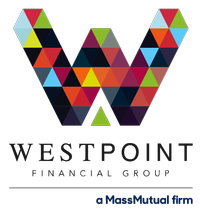Considerations For Selecting a Financial Wellness Provider
![]() As financial wellness increases in popularity, it becomes critical to develop a valid framework for selecting a financial wellness provider.
As financial wellness increases in popularity, it becomes critical to develop a valid framework for selecting a financial wellness provider.
Providers offer a variety of tools, resources, and services. Due to the diversity of offerings, if employers can effectively communicate their highest-priority components of a financial wellness provider, they may be better suited to navigate what is becoming an increasingly complex landscape.
Here are some considerations that employers may want to incorporate into their evaluation process. This list only serves as a framework to start their evaluation—the needs and priorities of every employer may differ.
Budget or cost
For many employers, this may be the biggest factor in narrowing down the list of potential financial wellness providers.
- Is cost based on all eligible employees for the program, or are only those who enroll charged a fee?
- Will the cost be passed through to employees?
- Will the employer decide to shoulder the per-employee cost?
Business model
Financial wellness as a topic has exploded very quickly throughout the retirement industry. Because of its current widespread popularity, financial wellness providers seem to be entering the market almost every month. But do they, much like the proliferation of target date providers a decade ago or dot-com start-ups from the late 1990s, have a strategy for long-term success, or are they a flash-in-the-pan outfit? Questions that employers should ask a potential provider could include:
- Do they have the capacity to grow as my organization grows?
- How do they make their money—from advertising, or does their revenue come from cross-selling additional products and services to my workforce?
Communication frequency
How often a financial wellness provider may be sending messages to employees may be an important consideration. Each company develops its own communication culture. Some may pepper their employees with frequent messages, others may prefer to group communications in a newsletter type of format that only goes out weekly or perhaps less frequently.
Inquire about the timing, frequency, and type of message that the financial wellness provider would typically send. In an ideal world, perhaps they can even synchronize their messages to be complementary to the ones the employer is sending as well.
- What is their client service model for ongoing engagements with me/the employer?
- Do they have dedicated account or relationship managers? Is it a pooled client service environment?
Is there a toll-free number? - What is the ongoing cadence of communications after the program is implemented?
Just like the difference in financial wellness providers, a variety of demographics, preferences, and communication styles exist all within the same organization. Employers can work with their advisor to prioritize the services and features of financial wellness providers that are most important to them.
Multimedia resources
Each organization’s workforce is unique. And most of the time, it’s not homogeneous. Some employees may have access to computers, laptops, or other mobile devices, while other employees rely more heavily on paper-based communication or call center conversations.
- Does the financial wellness provider offer education in a variety of formats?
- How is content accessed? Do employees have to go to the financial wellness provider’s site, can the content reside on the employer’s internal websites, or is it a mix of both?
- Is content available in paper, electronic, phone-based, and/or face-to-face formats? Which of those might be the highest priority for the employer’s organization?
Data reporting capabilities
Financial wellness providers come in a variety of flavors. Some offer coaches or access to financial professionals. Others link financial accounts to give users a holistic look at their finances on a weekly or monthly basis. And others are prescriptive in the behaviors that lead to financial wellness and the order in which employees change each behavior.
All of those examples come with differing abilities to track employees’ progress and measure the success of the program. Employers who may be under pressure to demonstrate the effectiveness of a financial wellness program may want to evaluate how detailed the program can be at providing results or progress.
While data reporting capabilities sound like a “must have,” employers should keep in mind that this capability is often accompanied by bigger logistical hurdles pertaining to data feeds and access to employee information. This raises questions about data integrity and security as well. Data reporting may also carry with it a heftier price tag for the program.
Integration with other benefits
Financial wellness should be seen as an extension, or another facet, of an employee’s overall benefits package. The better integrated it can be into existing communications about retirement, the better chance the employee has to understand how the benefits fit together. At its core, financial wellness gives employees the capacity to generate additional savings, an important outlet of which is their workplace retirement plan. Other considerations with respect to integration are:
- Can messages about financial wellness be incorporated into retirement plan statements?
- Can the plan’s website include financial wellness (or at least a link to obtain more information on the program and resources available)?
- Is there an opportunity to incorporate financial wellness information into call center scripts?
Enhancing the visibility and amplifying the presence of the financial wellness program will only help to increase adoption within the workforce.
